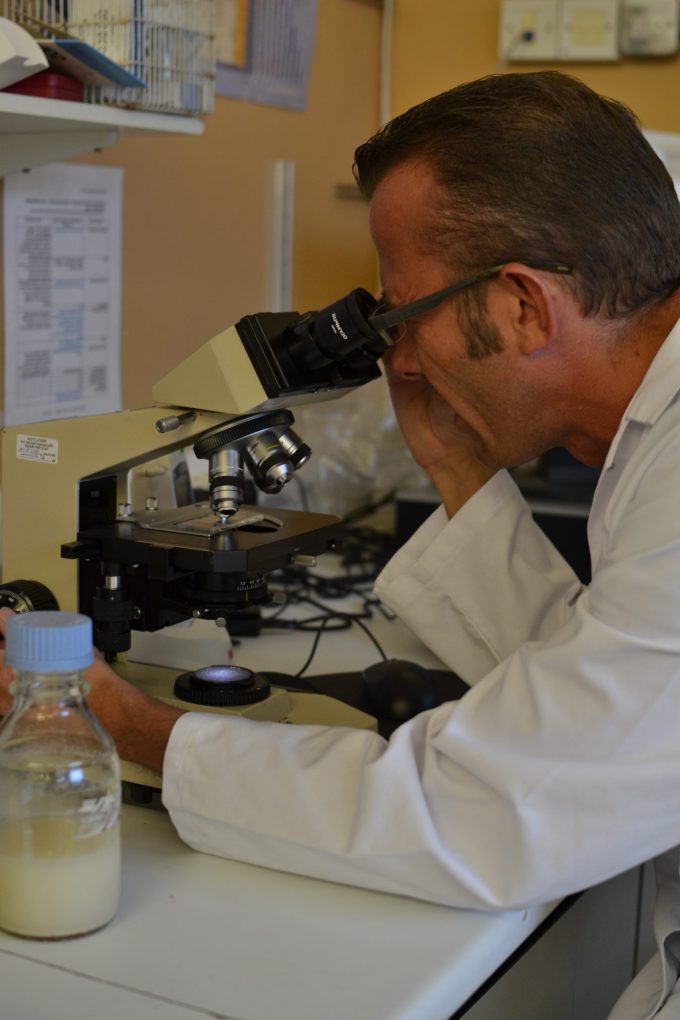
Homofermentative LAB (homo meaning ‘all the same’) refers to the end product of fermentation, which is only, or ‘all’ lactic acid, they also produce carbon dioxide (CO2) as by-product . Lactic acid is the flavour that you might recognise as tasting tangy like yogurt.
In sourdough starters, a complex symbiotic community of yeast and lactic acid bacteria (LAB) collaborates to develop the unique characteristics of sourdough bread. These LABs are classified into different types based on the primary acids they produce during fermentation. Their metabolic activity involves fermenting carbohydrates present in the flour, which leads to the production of carbon dioxide (CO2) and various organic acids, including lactic acid including Short Chain Fatty Acids. (SCFAs).
Role of Organic Acids in Sourdough
The organic acids produced by LABs, particularly lactic acid, are crucial in shaping the flavour profile of sourdough bread. Lactic acid, which imparts a tangy flavour reminiscent of yogurt, is a key contributor to the characteristic sourness of the bread. This tanginess is not just a sensory attribute but also reflects the underlying biochemical processes that occur during fermentation. The production of lactic acid lowers the dough’s pH, which aids in the breakdown of phytic acid, an antinutritional factor. This breakdown enhances the bioavailability of essential minerals such as calcium, magnesium, and iron, thereby improving the nutritional quality of the bread.
Homofermentative LAB in Sourdough
Homofermentative lactic acid bacteria are a specific group of LAB that produce lactic acid as the primary or sole end product of carbohydrate fermentation. These bacteria, such as Lactobacillus plantarum and Lactobacillus kimchii—which are notable for being found in my sourdough starter—are efficient at converting sugars into lactic acid. The production of lactic acid by these bacteria also results in the generation of CO2, which contributes to the leavening of the dough, thereby affecting the bread’s texture and crumb structure.
The presence of Lactobacillus kimchii in my sourdough starter is particularly interesting as it is more commonly associated with the fermentation of Korean kimchi. However, in a sourdough context, L. kimchii functions similarly to other homofermentative LAB by contributing to the production of lactic acid. This species may also impart unique flavour nuances and contribute to the microbial diversity of my starter, potentially enhancing both the sensory and nutritional attributes of my sourdough.
Cultural and Microbial Connections in Baking
There is a fascinating cultural link between the tradition of women baking and the microbial communities present in sourdough. Research has shown that the hands of women, particularly those who handle fermented foods like kimchi, are often more populated with lactic acid bacteria. This microbial transfer can enrich the sourdough starter, potentially increasing its lactic acid content and influencing the overall microbial balance. The practice of baking with one’s hands, especially in traditional settings, is not just about technique but also about transferring a living, beneficial microbial culture that has been shaped by generations of culinary practices. This is especially true in cultures where women are the primary food preparers, and fermented foods like kimchi are a staple. The inclusion of Lactobacillus kimchii in my sourdough starter exemplifies this microbial connection, linking the hands of the baker, the traditions of fermentation, and the bread itself in a symbiotic relationship that enhances both flavour and nutrition.
Nutritional and Functional Impacts
The metabolites produced by homofermentative LAB, particularly lactic acid, play a vital role in sourdough’s overall digestibility and nutritional profile. The acidification process initiated by these bacteria not only improves mineral absorption by breaking down phytic acid but also promotes partial gluten hydrolysis. This process can make the bread more digestible, particularly for individuals with gluten sensitivities.
In addition to lactic acid, the short-chain fatty acids produced during fermentation by certain LAB strains contribute to gut health by serving as energy sources for colonocytes and by promoting a healthy gut microbiome. The combination of these metabolic activities results in a bread that is not only flavorful but also has enhanced health benefits.
To Summarise
Homofermentative lactic acid bacteria, including Lactobacillus kimchii, play a critical role in the fermentation process of sourdough, driving both the flavour development and nutritional enhancement of the bread. By producing lactic acid and CO2, these bacteria contribute to the distinctive tanginess, improved texture, and superior digestibility of sourdough bread, while also supporting the breakdown of antinutritional factors and the production of beneficial metabolites such as short-chain fatty acids. The cultural practice of hand baking, especially in contexts involving fermented foods like kimchi, enriches the microbial diversity and enhances the overall quality of the bread.
For more on bacteria in sourdough see Heterofermentative lactobacilli & Facultative Heterofermentative lactic acid bacteria.



